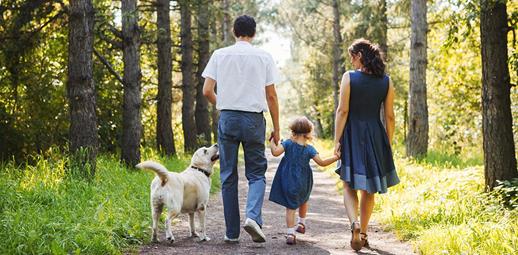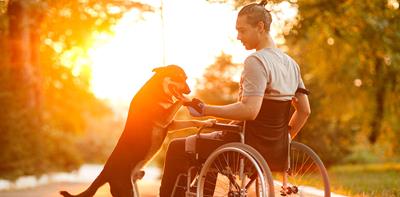
Bringing a dog home and introducing them to their new family can be an exciting and special time.
But it can also be overwhelming for your dog, especially if there are children involved. So, you need to manage these first interactions very carefully in order to start good habits and help your new dog feel like part of the family.
Here are some tips on how to go about introducing a new dog to your children and the rest of your family.
1. Teach the right behaviour: Before you bring your dog home, talk to your children about how to behave around pets. That includes reminding them that dogs aren’t toys and need to be treated more gently, so they shouldn’t tug their fur, nor touch their whiskers or tails.
2. Keep a watchful eye: Children and dogs can both be unpredictable. So, be sure to supervise those first few interactions until you’re comfortable they can play together safely.
3. Let your dog approach the children first rather than the other way round: Make sure your children sit calmly and quietly and don’t stare at the dog. Then your dog or puppy can make the first approach when it’s ready.
4. Stagger introductions: Don’t overwhelm your dog by introducing him or her to your whole family at once. They’ll feel more comfortable getting used to one person at a time.
5. Take it slowly: Your new dog is in a new and potentially intimidating environment, so for the first few days be sure to give them plenty of quiet time and space. If your children aren’t used to dogs, then they may get frightened. So be ready to move the dog away if it gets too much. Similarly, if the dog starts growling, separate them and try again another time when your dog is more at ease.
6. Provide an escape route for your dog: Always ensure your dog can get away from the children if they want to. For this reason, you may prefer to make introductions outside in the garden or by taking your dog for a walk.
7. Respect boundaries: Teach your children that when your dog is eating or sleeping, then they should leave it alone. The same goes for if the dog is over-excited.
8. Show your children how to properly stroke a dog: As Battersea Dogs & Cats explains, it’s important to allow your dog to approach and sniff your hand without reaching your hand out to them. If they seem relaxed and comfortable then you can try to stroke them, but never start by patting or stroking their head, as they may feel intimidated by this. After a few seconds of stroking, gently move your hand away and give the dog the opportunity to show it wants more. Tell them not to cuddle your dog either. Dogs don’t always like being hugged, especially if they aren’t used to it.
9. Don’t let bad behaviour become a habit: Animal charity Blue Cross warns that some dogs, such as collies, may nip at children’s ankles, causing them to squeal and run away, which in turn can encourage the dog to do the same again. Be sure to stop such behaviour straight away, so it doesn’t become a habit.
10. Be especially careful with older dogs and children: Blue Cross also warns of the importance of taking extra care with dogs who have impaired vision or hearing. It’s important to teach children to be especially gentle with these animals, as they are more easily startled and may bite if frightened.
It’s well worth taking the time to ensure these first interactions go as smoothly as possible, so that both dogs and people can get to know each other safely and comfortably. Once your dog and your children get acquainted and feel comfortable around each other, odds are they’ll become companions for life.

